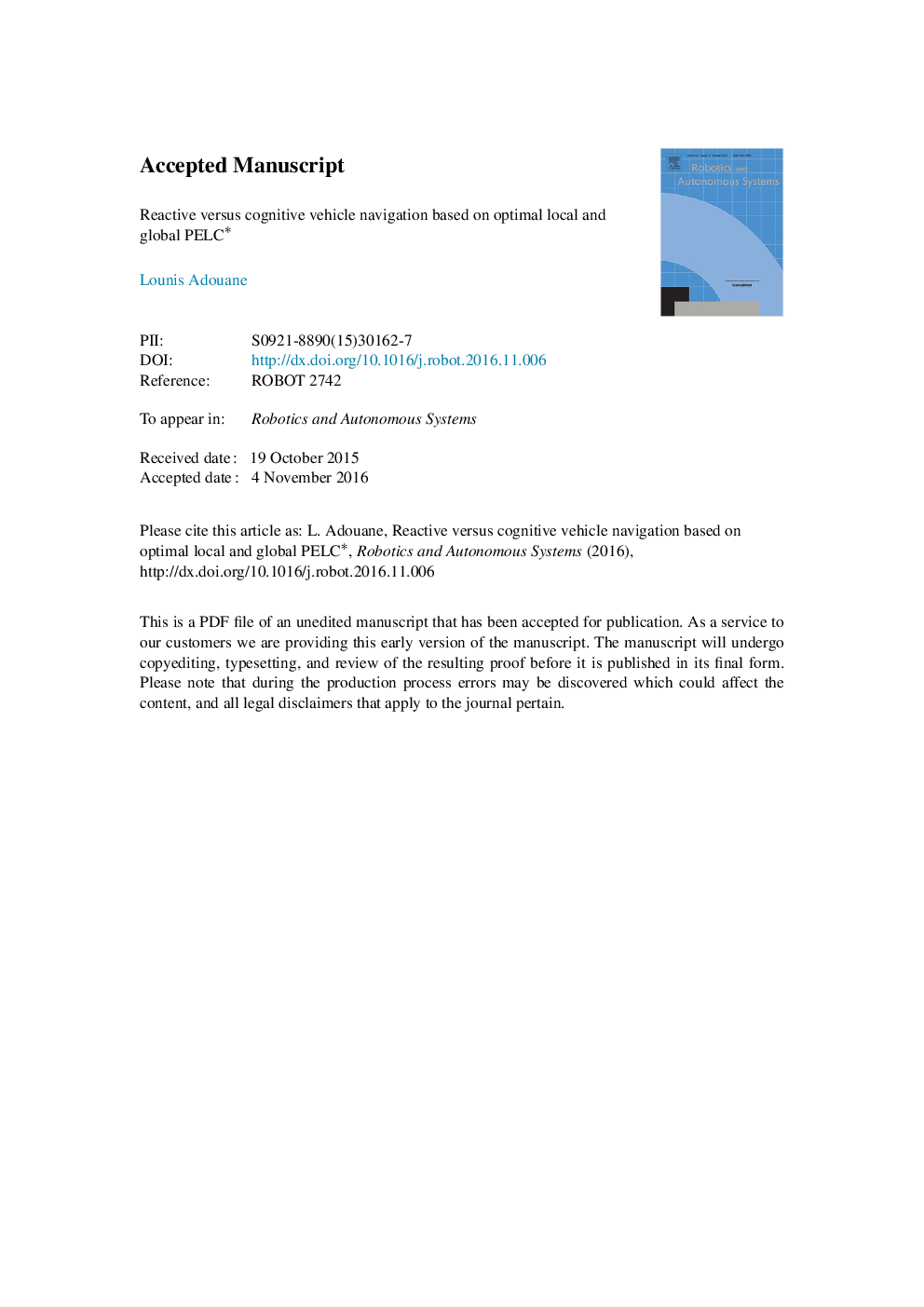| Article ID | Journal | Published Year | Pages | File Type |
|---|---|---|---|---|
| 4948890 | Robotics and Autonomous Systems | 2017 | 26 Pages |
Abstract
This paper addresses the challenging issue of determining the most suitable control strategy (planning-decision-action and their interactions), for autonomous navigation of vehicles which must deal with different environments contexts (e.g., cluttered or not, dynamic or not, etc.). The paper's main proposals are decomposed into two main parts: Firstly, the proposition of reliable and flexible components to perform short and long-term planning: at beginning, a generic and safe path planning-based on Parallel Elliptic Limit-Cycle (PELC) and its multi-criteria optimization (PELCâ) have been proposed to perform either reactive or cognitive navigation. Afterward, it is proposed to suitably sequence several PELC/PELCâ in order to obtain an optimal g lobal path-based on PELC (gPELCâ). Secondly, this paper proposes an overall Hybrid (reactive/cognitive) multi-controller architecture for autonomous navigation using PELCâ and gPELCâ. This architecture has been designed in order to use a uniform set-points convention and a common control law to perform several sub-tasks (e.g., obstacle avoidance, target reaching/tracking, path following, etc.). A multitude of simulations and a real experiment have been performed in order to confirm the potentialities of the overall proposed methodology.
Related Topics
Physical Sciences and Engineering
Computer Science
Artificial Intelligence
Authors
Lounis Adouane,
